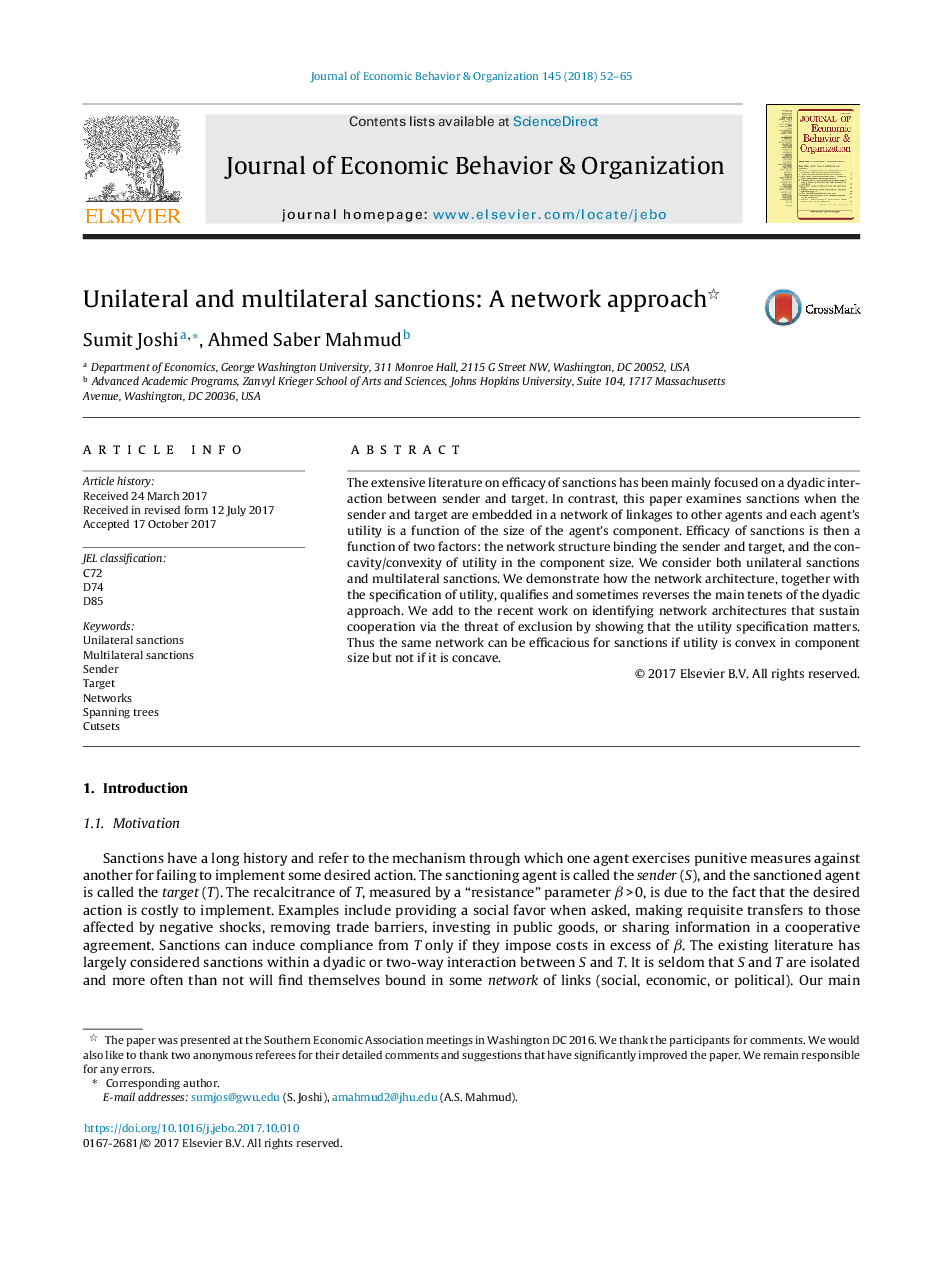| Article ID | Journal | Published Year | Pages | File Type |
|---|---|---|---|---|
| 7242675 | Journal of Economic Behavior & Organization | 2018 | 14 Pages |
Abstract
The extensive literature on efficacy of sanctions has been mainly focused on a dyadic interaction between sender and target. In contrast, this paper examines sanctions when the sender and target are embedded in a network of linkages to other agents and each agent's utility is a function of the size of the agent's component. Efficacy of sanctions is then a function of two factors: the network structure binding the sender and target, and the concavity/convexity of utility in the component size. We consider both unilateral sanctions and multilateral sanctions. We demonstrate how the network architecture, together with the specification of utility, qualifies and sometimes reverses the main tenets of the dyadic approach. We add to the recent work on identifying network architectures that sustain cooperation via the threat of exclusion by showing that the utility specification matters. Thus the same network can be efficacious for sanctions if utility is convex in component size but not if it is concave.
Related Topics
Social Sciences and Humanities
Economics, Econometrics and Finance
Economics and Econometrics
Authors
Sumit Joshi, Ahmed Saber Mahmud,
